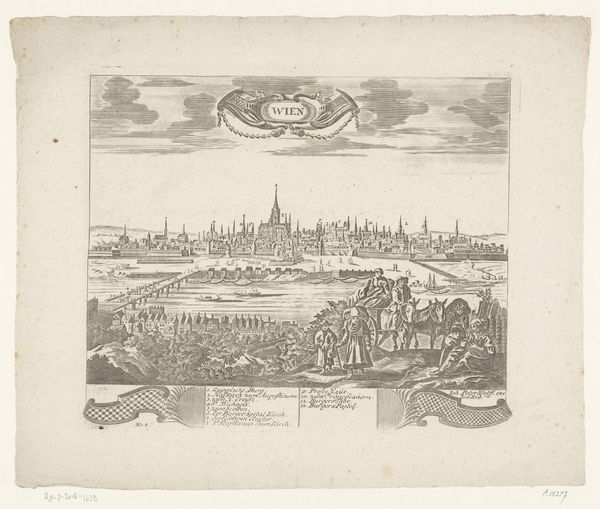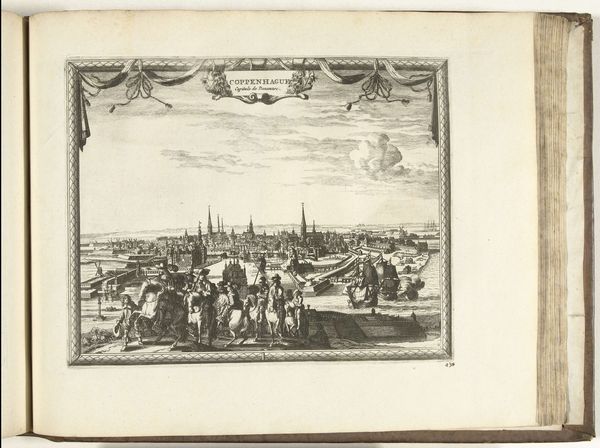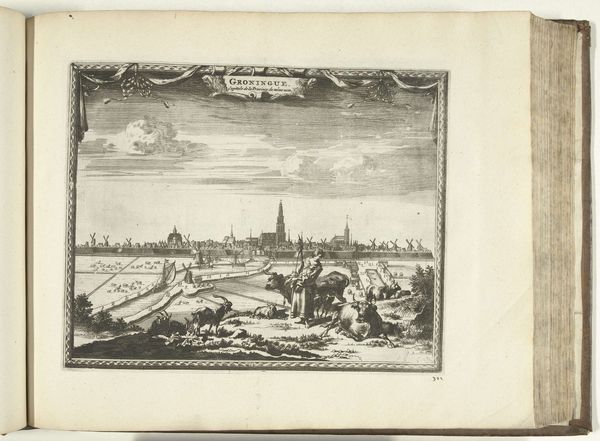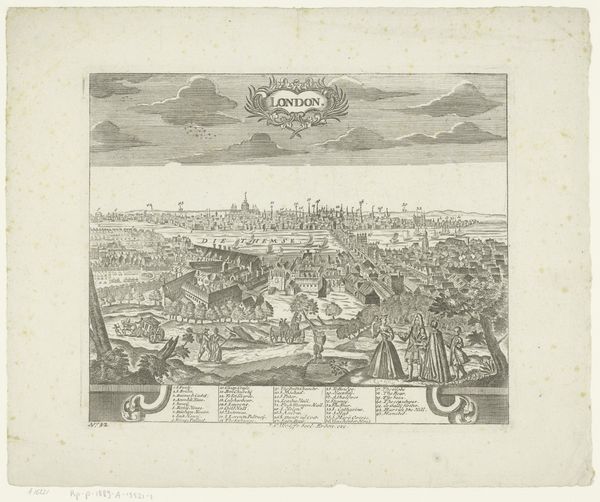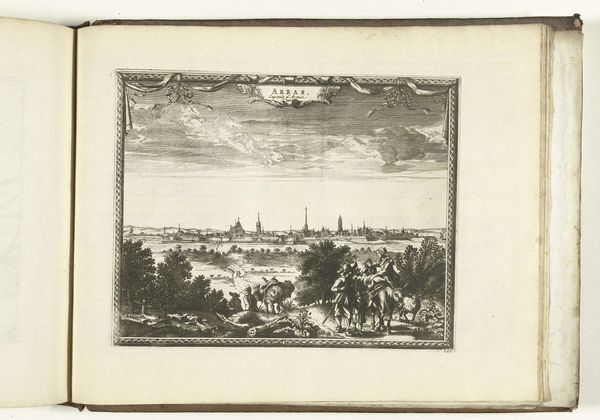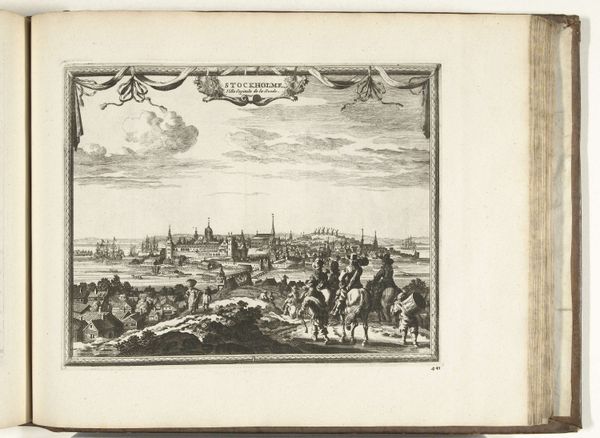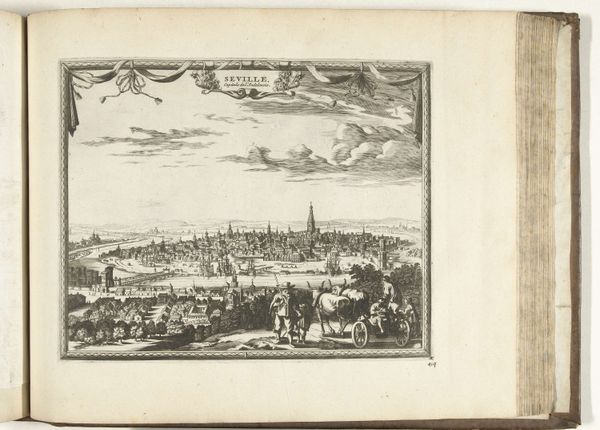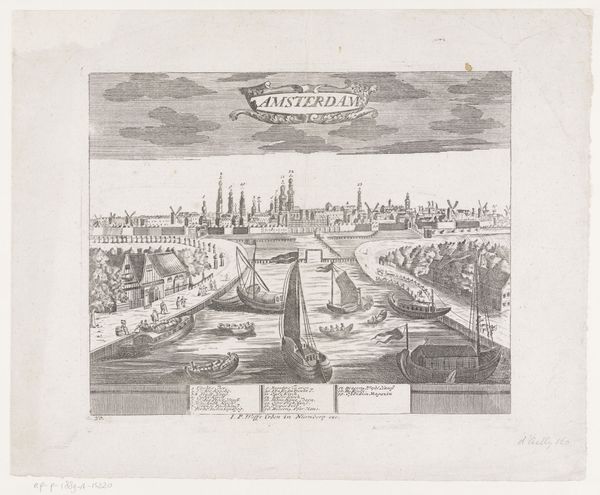
print, etching
#
baroque
# print
#
etching
#
landscape
#
cityscape
Dimensions: height 281 mm, width 346 mm
Copyright: Rijks Museum: Open Domain
This is a cityscape of Frankfurt, made by Johann Christoph Dehne using etching, a printmaking technique, sometime in the early modern period. The process involves coating a metal plate with a waxy, acid-resistant substance, then scratching an image into the coating, exposing the metal. When the plate is dipped in acid, the exposed lines are eaten away, creating grooves. Ink is then applied to the plate, filling the grooves, and the surface is wiped clean. Finally, paper is pressed against the plate, transferring the ink and creating a print. Consider the labor involved, from the initial metalworking, to the etcher’s skilled hand, to the printing process itself. The quality of the lines, their precision and fineness, speaks to the etcher’s mastery. The even tone and the consistent depth of the lines suggest a controlled and practiced application of acid. By focusing on the materials and the making, we can appreciate this print not just as a picture, but as a testament to the skill and labor that went into its creation. It invites us to consider the social and economic context in which it was made, and challenges us to broaden our understanding of art history.
Comments
No comments
Be the first to comment and join the conversation on the ultimate creative platform.

